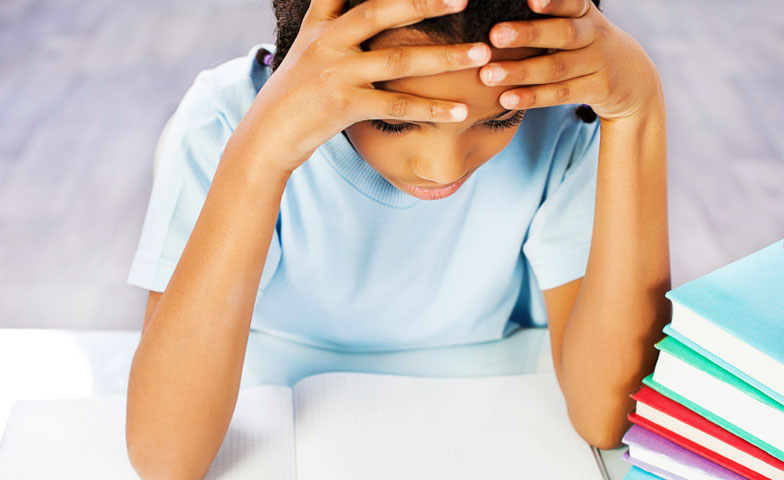Anxiety is the most prevalent mental health crisis facing Americans. Eight percent of teens are diagnosed, though countless more suffer symptoms. Few seek help.
Teachers are on the front lines wondering how to help as they see firsthand the consequences in both cognitive and psychological decline. As anxiety levels increase, executive functions diminish and IQ levels drop. As such, anxiety is, indeed, a learning disability. What can you do?
Anxiety is commonly caused by the feeling of fear over a threat to the self (perceived or real), ruling out, of course, medicinal side effects, substance abuse, and genetics. Anxiety comes in many shapes and sizes: phobias, separation anxiety, social anxiety, panic attacks, and more. In most instances, the greatest driver of anxiety is one’s thinking about outside events.
The most popular examples of anxious thinking include negative thinking (I’m going to fail this test) and rigid perfectionism (It has to be perfect or it won’t be good enough). Moreover, the underlying, pervasive thought that young people have that feeds the anxiety is thinking they are not enough—good enough, smart enough, thin enough, or you-name-it enough.
As a result, young people worry about anything that puts them in competition or judgment. Will I be considered smart enough? Athletic enough? Popular enough?
This pain causes many to turn to behaviors that regulate their moods, for they lack self-regulation strategies. These behaviors involve numbing/stuffing or acting out the not-good-enough feelings and include things such as cutting, risk-taking, rule-breaking, alcohol, drugs, and promiscuity.
But this is a futile effort because the temporary relief also diminishes the joy in life, which is why anxiety’s cousin is depression. The cycle is evident. As a result, students need your help managing the pain of anxiety.
To ease the pain, well-meaning parents and teachers make accommodations. Unfortunately, this can backfire.
The first mistake people make is avoiding situations that cause the child anxiety. Protecting children from fears is a temporary solution that only reinforces the fear in the long run. The same holds true for making the world safe and predictable when what helps more is building a flexible mindset that can manage the unknown.
Another mistake is telling students that everything will be fine. When faced with real fear, this is not accurate in their minds and, indeed, it is not actually true. No one can promise that everything will be fine. The world is an unpredictable place and because of that we are better off learning to live with and manage anxiety rather than trying to make it disappear altogether.
Instead of offering security, offer skills. For instance, if a student avoids school, create a context for him that values him being there. In one example, a student became known as the school pet expert. He never missed another day because he was valued for his knowledge of pets, something for which the teachers and many classmates counted on him. He felt “good enough.”
Other than cognitive behavior therapy (the best treatment for anxiety), you can make some interventions in the classroom. To begin, assess your level of connection with each of your students. Every student in the school needs to feel an authentic connection for optimal learning.
Also, consider the following aspects of a student’s daily life at school:
- A safe and secure classroom, hallway, cafeteria, locker room, bus, and grounds. See www.SchoolClimate.org.
- A solid social-emotional learning program in place. See www.YourSelfSeries.com.
- A fair environment. Do students help create rules and consequences?
- A quality feedback system. Timely, accurate, no shaming.
- More choices throughout the day. Choices build a sense of self. A sense of self builds resilience.
- Activities that develop sparks, interests, talents. Do not drop health class, music, art, gym, drama, sports.
Anxiety is less likely to flourish in an environment—and within the context of a curriculum—that supports the developing self.
